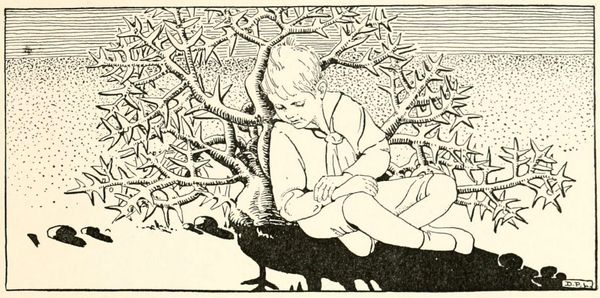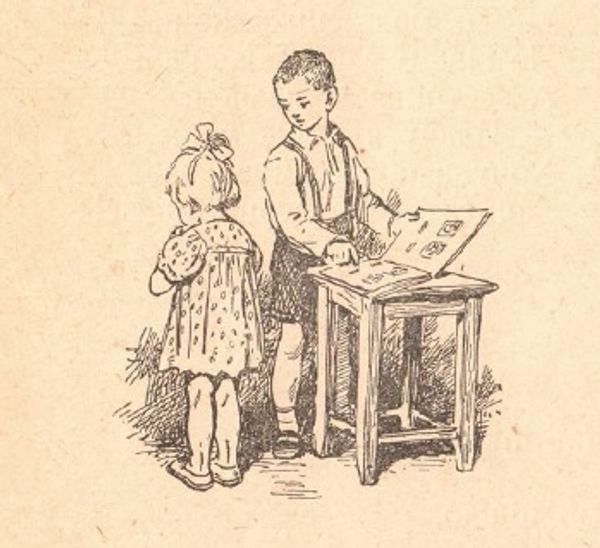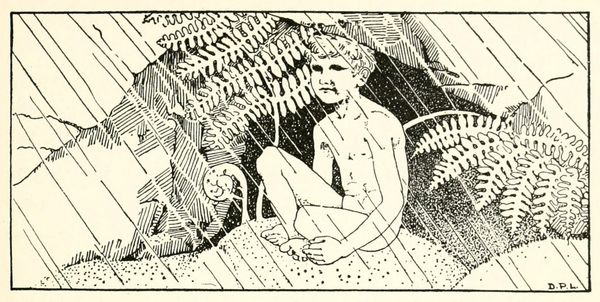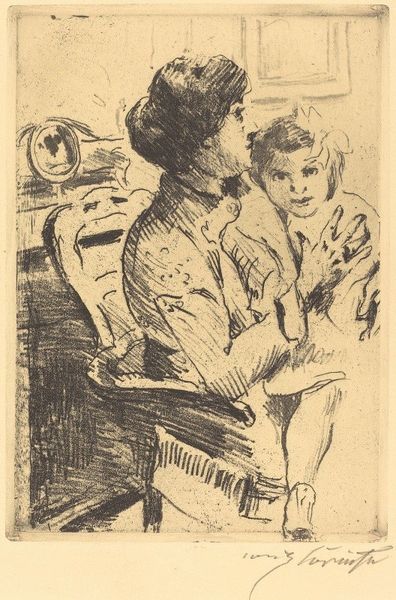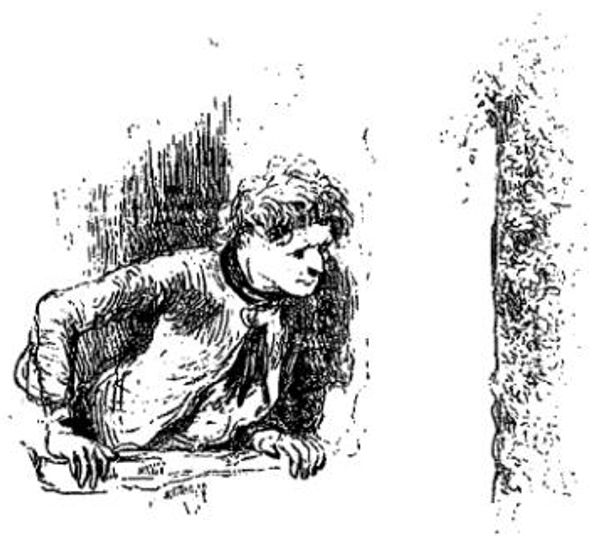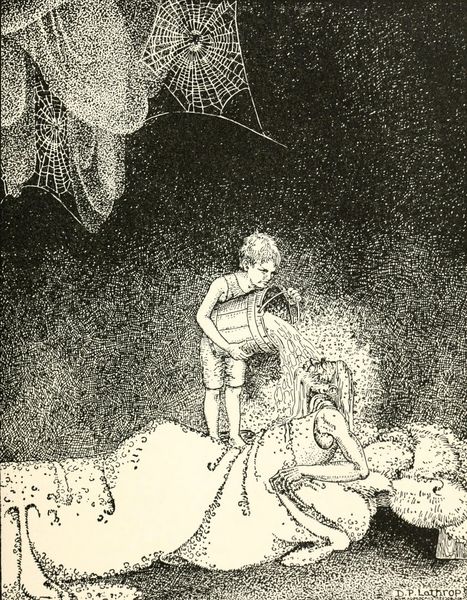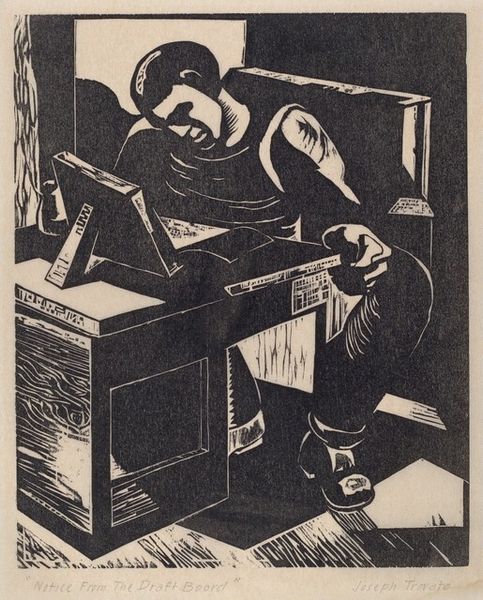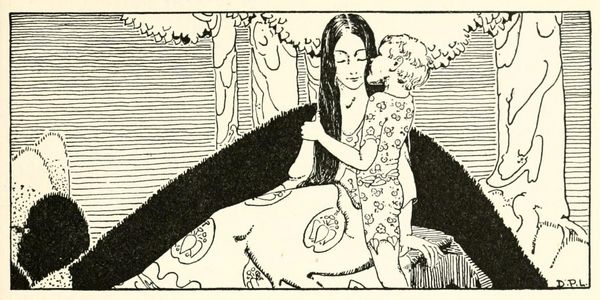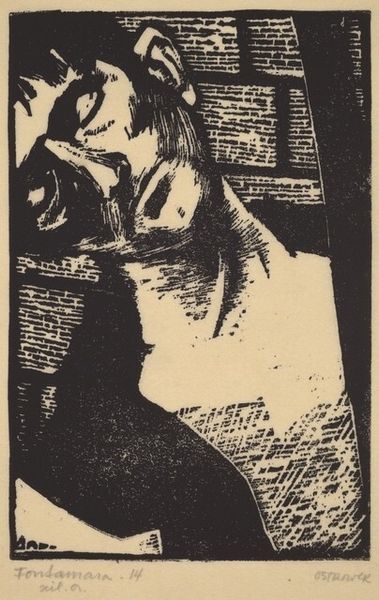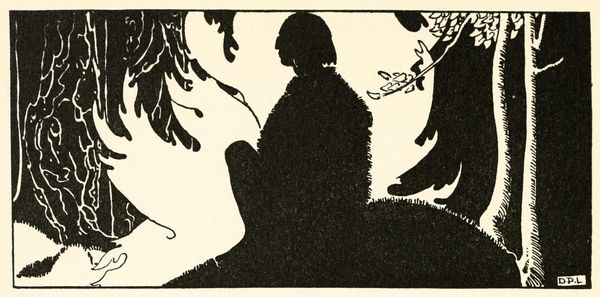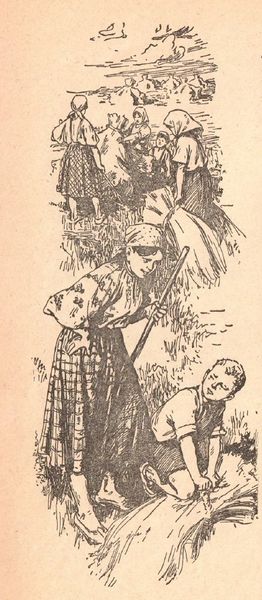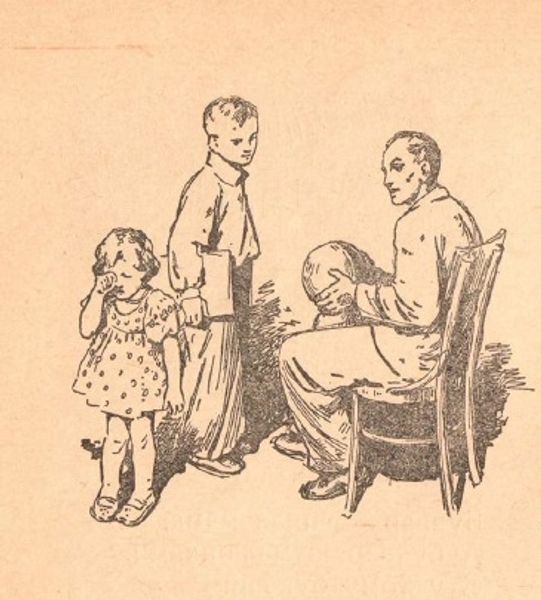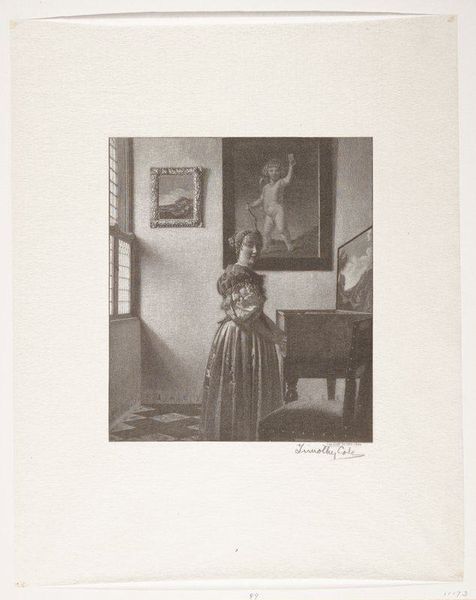
drawing, paper, ink
#
portrait
#
drawing
#
narrative-art
#
pen illustration
#
paper
#
ink line art
#
ink
Copyright: Public domain US
Editor: This is "A Little Boy Lost," an ink drawing on paper created by Dorothy Lathrop around 1920. The high contrast and stylized linework give it a slightly eerie, fairytale quality. The details in his patterned shirt compared to the abstract background strike me. What catches your eye about this piece? Curator: I'm drawn to the materials and the process. Think about the choice of ink, its availability at the time, its permanence. Lathrop, as an illustrator, likely worked to very tight deadlines and was working for clients. How does this mode of art-making shape what and how she made art? Are there limitations? Is there room for artistic vision? Editor: That’s interesting! So, instead of seeing the drawing as purely aesthetic, you’re thinking about the economics that allowed it to be made? Curator: Exactly. Look at the paper, too. This wasn't necessarily meant to last, but it becomes precious because of the labor that went into it. Who was her intended audience? This was likely made for mass consumption; does that cheapen or democratize art? It's a pen illustration meant for reproduction on a larger scale, to be distributed. So, labor and access play key roles in my interpretation of this piece. Editor: I hadn't considered how its purpose might have affected the artistic decisions. The lines certainly do feel very precise and calculated. Curator: And does the title play into that? Is the boy “lost” in mass culture? What did "being lost" mean in the 1920s, a time of significant social change? Editor: That's given me a lot to think about. Considering the social implications makes me appreciate the drawing's story in a whole new way. Curator: It's about looking beyond the surface and considering how the making of art, even a seemingly simple illustration, is entangled with the broader economic and cultural context.
Comments
No comments
Be the first to comment and join the conversation on the ultimate creative platform.
